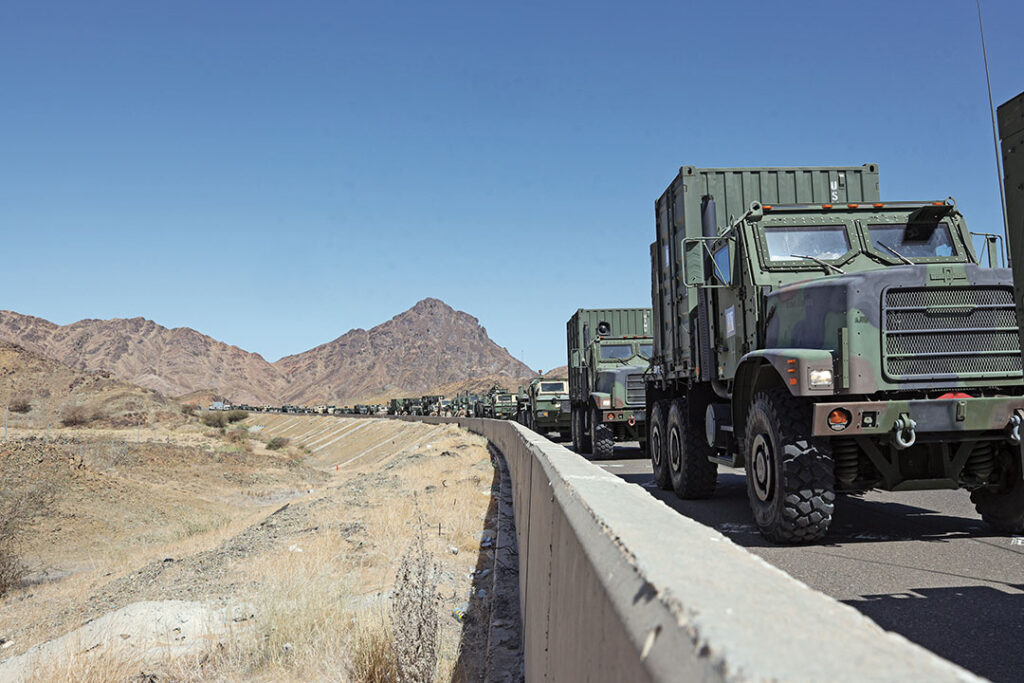UNIPATH STAFF
Seventy-two military vehicles carrying hundreds of U.S. Marines rumbled to life at the break of dawn, their silhouettes splayed across the glowing horizon harboring the Saudi sun.
In a military camp outside of Yanbu on the Red Sea, tires churned desert dust as the convoy streamed onto a highway that climbed into the barren highlands outside the city.
Over the next two weeks, the U.S. military convoy, accompanied by Saudi and Emirati partners, skirted mountains, lava fields and sand dunes on a military exercise that would take it across the width of the Arabian Peninsula.
It was all part of Native Fury 24, an exercise focused on the military science of logistics. Without the efforts of supply and support troops — in this case moving troops and equipment 1,900 kilometers across some of the world’s harshest terrain — most military missions would flounder.
Native Fury showcased how a multinational amphibious expeditionary force could move rapidly across land in case adversaries sever sea lanes. This “strategic use of logistics” represented the “essence of teamwork” between U.S., Saudi and Emirati forces, said U.S. Marine Corps Brig. Gen. Michael E. McWilliams, Commanding General, 2nd Marine Logistics Group, from Camp Lejeune, North Carolina.
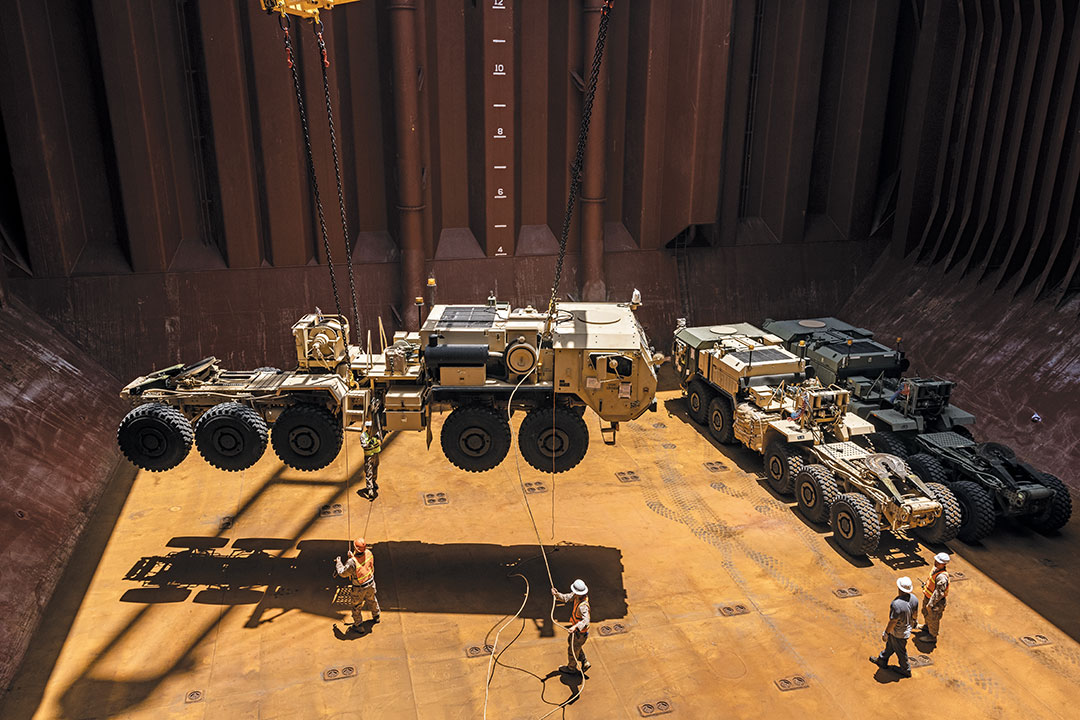
“This is no easy feat, but the successful outcome of Native Fury will be a testament to our collective ability to overcome obstacles in any domain,” Brig. Gen. McWilliams said as the convoy readied for departure in early May 2024.
“It will mark a historic chapter in military cooperation, emphasizing the shared commitment to security and readiness in the Middle East.”
Saudi Brig. Gen. Oqab bin Awad Al-Mutairi, commander of Native Fury 24, said the primary objectives of the exercise included bolstering coordination and partnership, exchanging experiences, and elevating training standards through the use of military bases and road networks within Saudi Arabia.
U.S. and partner forces have conducted Native Fury eight times since 2008, but the 2024 exercise represented
a series of firsts.
- The first combined participation by the Saudis and Emiratis added an extra layer of coordination, including a border crossing near Al Batha in which Saudi troops relinquished convoy escort duties to their Emirati counterparts.
- U.S. Army Soldiers joined the convoy to conduct the first long-range, cross-country trial of its new Autonomous Tactical Vehicle System. These robotically controlled supply trucks can operate without human drivers, accelerating, braking, swerving and backing up independently. Their integration into ground forces reduces the need for Soldiers to perform hazardous resupply missions.
- Also noteworthy was that Native Fury occurred simultaneously with several other multinational exercises across the Middle East, such as Eager Lion in Jordan, Indigo Defender in Saudi Arabia and Iron Union in the United Arab Emirates.
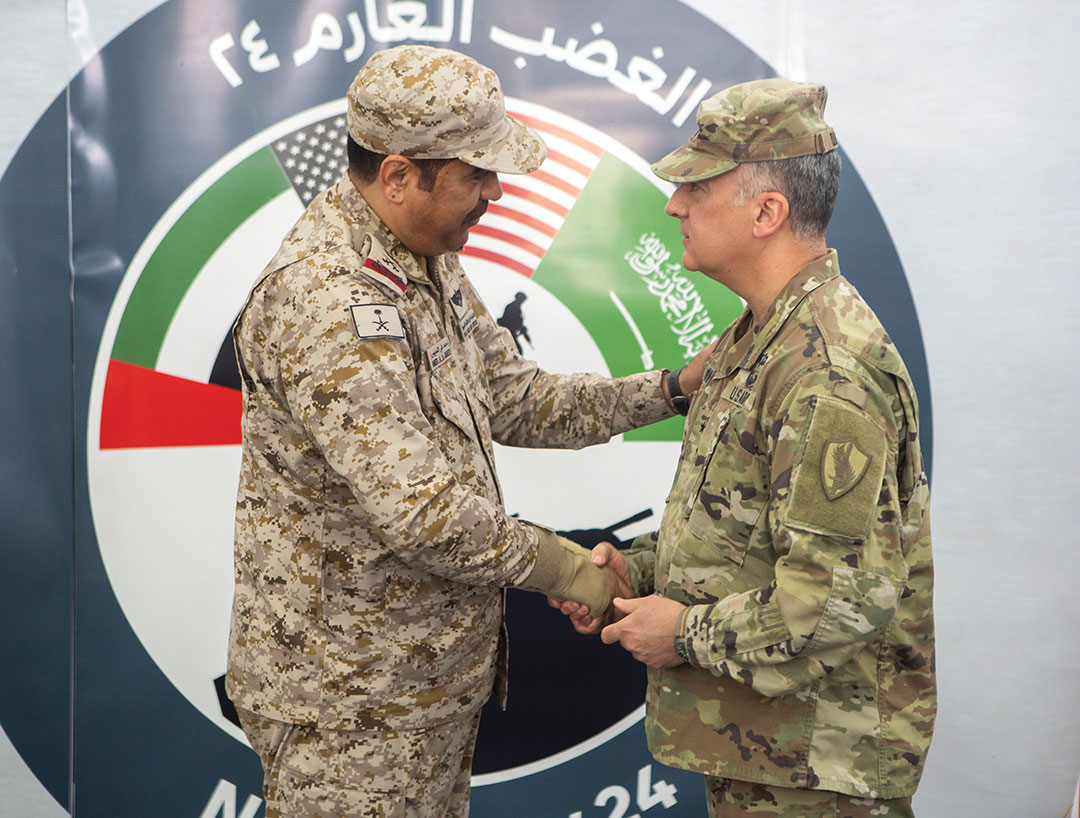
STAFF SGT. BENJAMIN MCDONALD/U.S. MARINE CORPS
A self-reliant convoy
The trucks and equipment making up the convoy arrived in the Saudi port of Yanbu in late April and prepared for departure at a supply depot in the desert, where mechanics prepared equipment for a trans-Arabian crossing in temperatures surpassing 40 degrees Celsius.
Cargo filled the majority of the 72 vehicles, mimicking the logistical challenges of a combat supply mission. Tow trucks accompanied the convoy to collect any vehicles that faltered. Each component of the convoy carried a doctor and medics in the event of injuries and illnesses.
Native Fury also involved military engineers, their services required when the convoy converged on Prince Sultan Air Base near Riyadh and organized an airfield repair demonstration for Saudi partners.
Big-bellied tankers among the convoy carried fuel for helicopters to simulate the real-world need for air support
on such long-distance missions.
Also making a debut at Native Fury were portable Dronebusters that operated by scrambling navigations
signals of enemy unmanned aerial vehicles.
“All the people and equipment we have on the convoy shows we have the ability to self-recover if anything goes wrong,” said U.S. Marine Corps Lt. Britten Warren, one of the convoy commanders.
Saudi Soldiers and police provided a security detail for the first stage of the exercise, ensuring that civilian traffic sharing the highways didn’t disrupt the convoy. As the convoy halted each night, Saudi forces provided tents and food for tired and hungry troops.
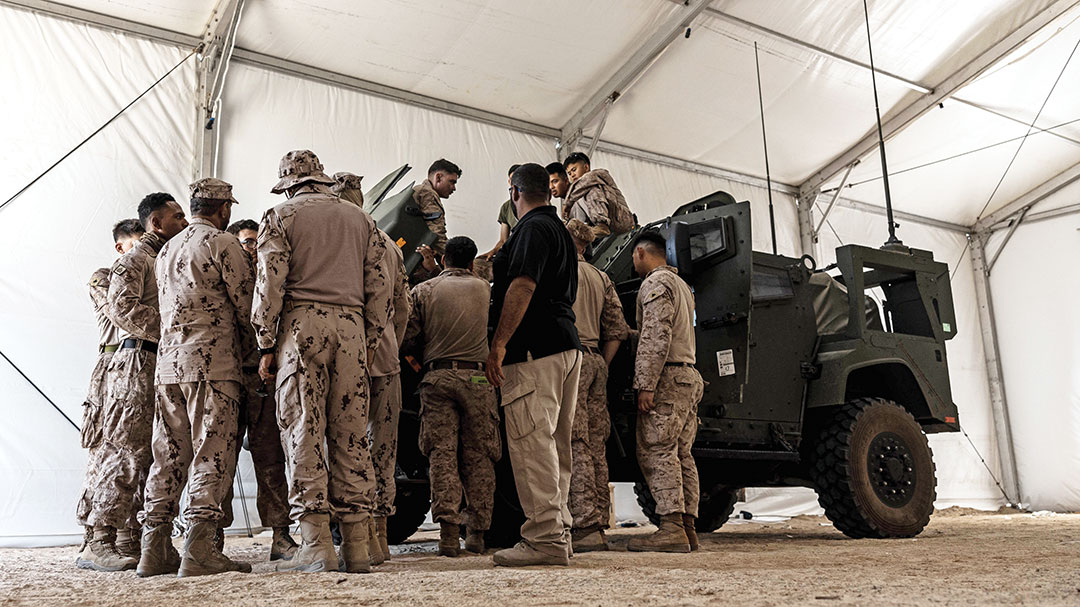
CPL. ALFONSO LIVIERI/U.S. MARINE CORPS
Partnership building
Friendship and cooperation between U.S. and Saudi forces extended beyond convoy operations. At the beginning of Native Fury, Muslim U.S. Marines had the honor of performing an “umrah” pilgrimage to Mecca.
When the convoy arrived at Prince Sultan Air Base several days later, the Saudis hosted U.S. troops in a cultural exchange that involved falconry demonstrations, dining on Saudi delicacies and excursions on camelback.
U.S. troops returned the favor by hosting Saudi troops at training events: combat casualty care, live-fire practice and emergency runway repair.
Seventy-five members of the Royal Saudi Air Force — including airfield firefighters and flight surgeons — attended a medical session led by U.S. Navy corpsmen. Lessons included applying dressings to treat burns and gunshot wounds, controlling battlefield bleeding with tourniquets and cardiopulmonary resuscitation.
“This is special for us,” one Saudi Air Force officer said after emerging from the training auditorium. “We don’t get
to do this with the Americans very often.”
The hands-on demonstrations were conducted with camaraderie and laughter, aided by two interpreters, said U.S. Navy Chief Sharla Bustamante.
“I was a little nervous at first that I didn’t speak Arabic,” Bustamante said. “But it went a lot more smoothly than I had expected.”
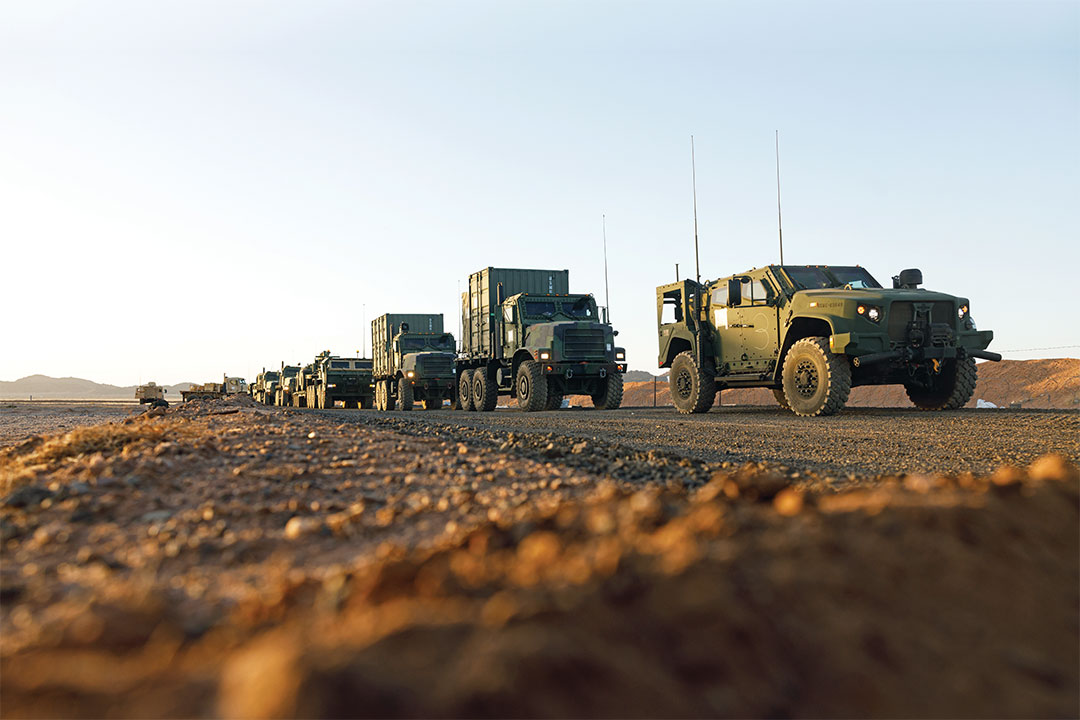
Into the Emirates
Native Fury’s emphasis on using the extensive network of roads and infrastructure across the Arabian Peninsula continued when the convoy advanced into the United Arab Emirates about a week after leaving Yanbu.
The UAE’s Al Hamra training city in Abu Dhabi provided a key stopover for the Native Fury convoy. At Al Hamra, U.S. and Emirati troops staged a simulated ambush on the convoy during Forward Arming and Refueling Point (FARP) training, just one of several training opportunities between partner forces. FARP requires terminal controllers to direct pilots to land their helicopters in a designated zone, where they are refueled with roto blades still spinning so they can swiftly return to their missions.
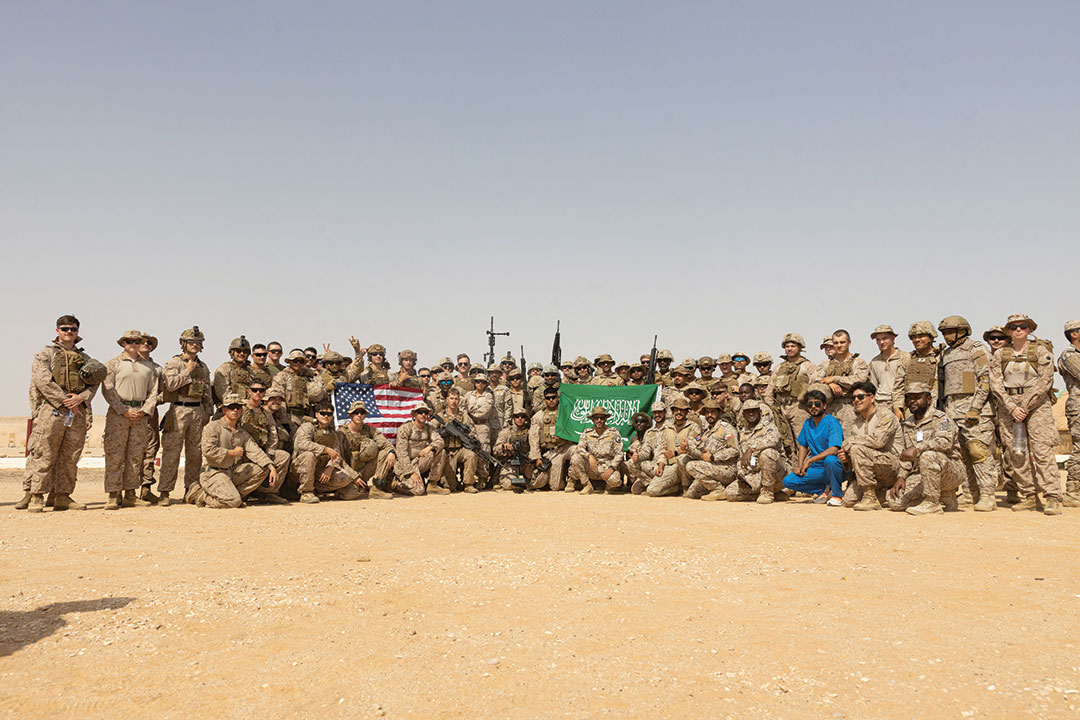
CPL. MARY KOHLMANN/U.S. MARINE CORPS
Afterward, the convoy pushed on to the sea, ending its mission in the port of Fujairah on the Gulf of Oman. Troops scrubbed their vehicles to remove dust, oil and grime from the journey, packed their equipment and reloaded everything on transport ships.
The Native Fury forces from the U.S., Saudi Arabia and the United Arab Emirates expressed pride in their accomplishment: the successful movement of an amphibious supply train 1,900 kilometers across one of the world’s most rugged landscapes.
It was achieved in less than a month with coordination among U.S. naval transports, port authorities on the Red Sea and Gulf of Oman, Royal Saudi Armed Forces, United Arab Emirates Armed Forces, U.S. Marines, U.S. Army Soldiers, police and Saudi and Emirati civilian ministries.

